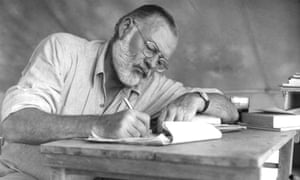Assignment
American literature
Dabhi Rita A.
M. A Sem :- 3
Roll no. :- 20
Topic :- Relation between Old Man and Manolin.
email : dabhirita1198@gmail.com
Enrollment no. :- 2069108420200007
Submitted : Department of English, Maharaja Krishnakumarsinhji Bhavnagar University.
Relation between Old Man and Manolin.
💠 Preface :
We all know that mutual understanding means understanding and comprehension between the two concerned persons or more. Actually it indicates how they understand each other and how they are strong and stable in their friendship and their personal sensibility. In any kind of friendship, may be between two men or a man and a woman, mutual understanding and concern is the basic criterion to stabilize the relationship between them so that no third party can destroy that mutual understanding or relationship. And also in friendship age doesn't matter. The same is true in case of Hemingway’s notable work, “The Old Man and the Sea”. It is Hemingway's masterpiece work and he was awarded The Nobel Prize for literature in 1954.
💠 About author :

Ernest Hemingway, in full Ernest Miller Hemingway, (July 21, 1899—July 2, 1961), American novelist and short-story writer, awarded the Nobel Prize for Literature in 1954. He was noted both for the intense masculinity of his writing and for his adventurous and widely publicized life. His succinct and lucid prose style exerted a powerful influence on American and British fiction in the 20th century. He published seven novels, six short-story collections, and two nonfiction works. Three of his novels, four short-story collections, and three nonfiction works were published posthumously. Many of his works are considered classics of American literature.Hemingway's fiction often used grammatical and stylistic structures from languages other than English.In 1954, when Hemingway was awarded the Nobel Prize for Literature, it was for "his mastery of the art of narrative, most recently demonstrated in The Old Man and the Sea, and for the influence that he has exerted on contemporary style. His notable works are:
(1925) In Our Time
(1926) The Sun Also Rises
(1929) A Farewell to Arms
(1937) To Have and Have Not
(1940) For Whom the Bell Tolls
(1952) The Old Man and the Sea
💠 The Old Man and the Sea :

The Old Man and the Sea, short heroic novel by Ernest Hemingway, published in 1952 and awarded the 1953 Pulitzer Prize for fiction. It was his last major work of fiction. Herel we find that Santiago ( Old man) is the protagonist of the novella. The story centres on an aging fisherman who engages in an epic battle to catch a giant marlin. In this novella Ernest Hemingway who used various mejor themes like, the honor in struggle, defeat and death, pride is a source of greatness and determination etc. The novella also proffers a close mutual attachment between the hero of the novel and his fishing associate Manolin. The loving, caring, devotional attitude of Manolin makes the protagonist Santiago is very active agent of the novel. They are actually friends in need than friends indeed. Their relationship is built on mutual understanding and respect and bonding. So let's discussed about the relationship between Old man and Manolin in detail.
◾Father son relationship :
The relationship between Manolin and Old man is one of apprentice and teacher that grows into a deeper, meaningful friendship. Manolin looks up to the Old man and respects him as a once successful fisherman despite his parents' feelings towards the old man. He also views the old man as his spiritual father and inspiration. In turn, Santiago selflessly teaches Manolin his craft and is sympathetic to his needs. Unlike Manolin's father, Santiago shows concern and genuine interest in Manolin. There is also a mutual respect between Santiago and Manolin. Santiago respects the fact that Manolin is willing to carry on his legacy and trusts him to do so. Santiago develops a love for Manolin and views him like a son. In turn, Manolin appreciates the opportunity to learn from the old man and shows great affection for Santiago. Their relationship begins as apprentice/teacher and transforms into father/son.
◾Friend and Mentor :
In the early stages of their friendship, Santiago and Manolin's relationship was more like that between a mentor and the person he is training. Towards the beginning of the novel they are much perpetrated to each other. Manolin , the boy had come to the old man learn how to fish as a young boy of only five years old. They had been together till Manolin became adolescent. The novel opens with Santiago having gone eighty four days without catching fish, and at the end forty days the boy had been force by his father to go on another boat even then they are still very much together bound by a deeper love and self-respect:
“The old man had taught the boy
to fish and the boy loved him.”
Thus the disciple and tutor relationship transcends to a father and son relationship. In Manolin’s words:
“If I cannot fish with you, I would
like to serve in some way.”
The boy serves every way and takes care all parochial needs of the old man. The boy is worried about the long run of bad luck of Santiago. He offers his tutor to purchase sardines to use as his bait, Santiago boldly refuses to take that help. But he insists him to take his help. The old man gets pleasure when disciple said:
I remember everything from
when we first went together.
Not only are Santiago and Manolin companions, Santiago also serves as Manolin's counselor, a person who instructs and teaches another person. In the novella we can find out that Manolin appears only at the beginning and at the end. Though Manolin has no physical role as such in the old man’s struggle with Marlin and the sharks but by staying constantly in the thought of Santiago throughout the adventure has a psychological impact on the novel.
◾Human relationship :
The old fisherman (Santiago) and the boy ( Manolin) value human relationships above materialism. The boy, in fact, provides warmth and sustenance to him when he needs it most. The boy's father and many of the other fishermen put material considerations first; a man must catch fish, otherwise he has no money. Manolin wants to accompany the old man again because he has done what his parents wanted him to do. He has "made some money". Now he wants to return to follow old Santiago. The relationship as many critics have suggested is very much like that between Christ and one of his disciples. Yet Hemingway is clearer than his symbol-oriented critics: "the old man had taught the boy to fish and the boy loved him."
In spite of a solitary life that Santiago has been living for years, he finds his only comfort in the company of the boy and surprisingly he is in him. To Santiago, Manolin is the imaginative construct to console himself. Santiago feels his strength enhance with the presence of the boy who has always supported him as he says again and again, "I wish I had the boy to help me and to see this." Corbett says, "He has developed a friendship a working relationship a love with the boy who begin fishing with him when the boy was only five."
Both Manolin and Santiago are very honest in their personal and professional life. Inspite of his parents objection he goes to Santiago only to support and stay with him in his unfortunate days. Manolin knows very well how to worship his preceptor. Definitely this disciple-preceptor relationship depends on their better understanding; otherwise it would not be possible. Santiago very frankly admits that the boy, Manolin is his only guide and mentor who can keep him even alive:
“Fishing kills me exactly as it keeps me
alive. The boy keeps me alive. I must
deceive myself too much.”
💠 Conclusion :
Manolin though immature in age shows his maturity while representing inner strength and going against his family. He is a loving son, instigator, instructor, close observer as well as the old man’s connecting link to the rest of the world. The old man communicates with the rest of the world through the boy. Thus the Santiago-Manolin relationship is a testament to Hemingway's skill of portraying independent relationships and their importance in life. The image of "Last Supper" may be well indicated here. Manolin plays the role of Jesus Christ who offers the old man food to rejuvenate and survive his life: "Come on and eat. You can't fish and not eat... keep the blanket around you. ...you'll not fish without eating while I am alive.." Manolin is a positive force in Santiago's life who comes to revive his life. The boy also brings coffee and ointment for Santiago's injury. He is the nurse guide and Angel to Santiago. Thus in manolin's character there is a mingling of masculinity and femininity. In this novella, Manolin's love for Santiago is the love of the disciple for his master and the love of a son to his adopted father and vice-versa.
💠 Work cited :
BERNAD, MIGUEL A. “The Old Man, the Sea and Hemingway.” Philippine Studies, vol. 7, no. 3, 1959, pp. 295–304. JSTOR, www.jstor.org/stable/42719458. Accessed 5 Dec. 2020.
Gurko, Leo. “The Old Man and the Sea.” College English, vol. 17, no. 1, 1955, pp. 11–15. JSTOR, www.jstor.org/stable/495716. Accessed 2 Dec. 2020.
Hemingway, Ernest. The Old Man the Sea. Cape, 1961.
Saha, Santosh, and Dolon Chapa Ghosh. THE MUTUAL. UNDERSTANDING BETWEEN SANTIAGO AND MANOLIN IN “THE OLD MAN AND THE SEA OF HEMINGWAY,” 2015.
Yang, Hong, and Zhenzhen Zhang. “Analysis of the Power of the Old Fisherman Santiago in the Old Man and the Sea.” Proceedings of the 2014 International Conference on Education, Management and Computing Technology, 2014, doi:10.2991/icemct-14.2014.51.







